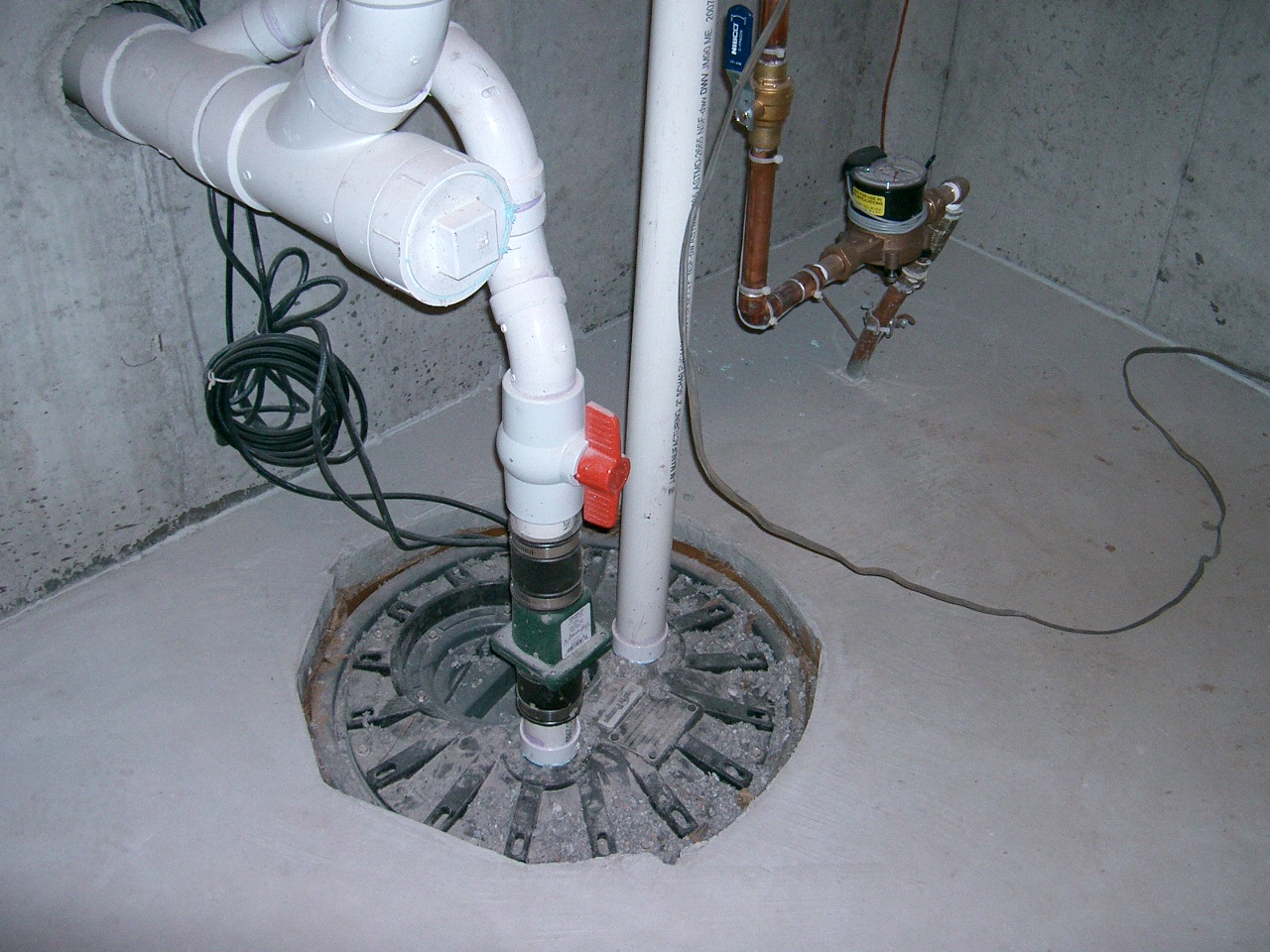The article author is making a number of good pointers relating to Cleaning & Maintenance Tips for Your Home's Sump Pump in general in this article further down.

Sump pumps are critical elements in many homes, specifically in locations prone to flooding or excessive dampness. They assist protect against water damage by effectively getting rid of excess water from basements or crawl spaces. Nevertheless, like any other device, sump pumps need routine upkeep to guarantee they function effectively when needed one of the most. Cleansing your sump pump is an essential part of its maintenance, and comprehending how to do it properly can conserve you from expensive fixings and possible disasters.
Introduction
Keeping a tidy sump pump is vital for its proper performance and durability. Overlooking this essential job can result in obstructions, malfunctions, and inevitably, water damages to your residential property. As a result, learning just how to clean up a sump pump is important for property owners who rely upon these devices to maintain their cellars completely dry and protected.
Indicators of a Dirty Sump Pump
Knowing when your sump pump requires cleansing is crucial for protecting against possible breakdowns. Some common indications that suggest a dirty sump pump include weird sounds throughout procedure, lowered water flow, and visible debris in the pit. If you discover any of these signs, it's important to clean your sump pump quickly to prevent any kind of further problems.
Getting ready for Cleaning
Prior to you start cleansing your sump pump, it's essential to take some security preventative measures. Beginning by turning off the power to the pump to prevent any type of electrical accidents. Furthermore, use appropriate safety equipment, such as handwear covers and goggles, to safeguard yourself from dirt, particles, and possible pathogens.
Comprehending the Sump Pump
Prior to diving into the cleaning procedure, it's necessary to have a standard understanding of exactly how a sump pump functions. Usually set up in a pit or basin listed below the basement flooring, a sump pump includes a number of essential elements, consisting of a pump, a float button, and a discharge pipe. When water gathers in the pit, the float button turns on the pump, which after that pumps the water out via the discharge pipeline, far from the building's foundation.
Detailed Overview to Cleaning Up a Sump Pump
Turning off the Power
Begin by disconnecting the power supply to the sump pump to stop any type of accidents while cleaning.
Checking for Proper Performance
Before reinstalling the pump, perform a fast test to ensure that the float switch triggers the pump appropriately. Pour some water right into the sump pit and observe the pump's procedure. If every little thing is working properly, you can reassemble the pump and reconnect the power supply.
Eliminating Debris and Dust
Make use of a pail or a scoop to get rid of any type of noticeable particles, dirt, or debris from the sump pit. Dispose of the particles effectively to stop it from blocking the pump or the discharge pipe.
Cleaning the Pump and Float Change
As soon as the pit is clear of particles, thoroughly eliminate the pump from the pit. Examine the pump and the float button for any indicators of damages or wear. Use a soft brush or cloth to cleanse the surface areas and eliminate any kind of collected grime.
Purging the System
After cleansing the pump and float switch, flush the sump pit with tidy water to remove any type of continuing to be dirt or sediment. This will certainly aid guarantee that the pump runs efficiently and efficiently.
Maintenance Tips to Keep Your Sump Pump Clean
Along with routine cleansing, there are numerous upkeep tips you can follow to maintain your sump pump in optimal condition:
Verdict
Cleaning your sump pump is a vital aspect of its maintenance and makes sure that it operates successfully when you require it the most. By complying with the steps described in this guide and incorporating normal maintenance into your routine, you can prolong the lifespan of your sump pump and shield your home from water damage.
6 STEPS ON HOW TO CLEAN A SUMP PUMP PROPERLY
UNDERSTANDING SUMP PUMPS
Your sump pump plays a crucial role in protecting your home by managing and removing excess water. It primarily functions as a “shield”, guarding your basement against the damaging effects of water accumulation. The pump is housed in a sump pit in the lowest part of your basement, and its job is to pump out any water that collects there.
During heavy rainfalls or when snow melts rapidly, water can infiltrate your basement, posing potential risks like flooding, structural damage, and harmful mold growth. Here, the sump pump springs into action, pumping out the intruding water and directing it away from your home.
SAFETY FIRST
Before cleaning, remember to prioritize safety. Disconnect the sump pump from the power source to prevent any accidental electric shocks. Also, wear sturdy gloves to protect your hands from any sharp or dirty components within the pump.
REMOVE THE SUMP PUMP
After ensuring your safety, the next step is to remove the sump pump from its pit. Doing this might require careful maneuvering as you don’t want to damage any pump components. Once removed, clean the sump pit to remove any accumulated debris or sludge.
INSPECT THE PUMP
Inspect the pump for any visible signs of wear or damage. Check the power cord, float switch, and impeller housing. If any components look worn out or damaged, consider replacing them to ensure optimal performance.
CLEAN THE PUMP
Thoroughly clean the pump with warm, soapy water. Make sure to rid it of any dirt, gravel, or other debris that might impede its performance. You can use a toothbrush to clean the small, hard-to-reach parts of the pump.
REINSTALL THE SUMP PUMP
Reinstall the pump into the sump pit Make sure it’s positioned correctly to remove the water effectively Once it’s back in place, reconnect it to the power source TEST THE PUMP
Finally, pour some water into the pit to ensure the pump works correctly. It should start automatically and begin pumping out the water; if it doesn’t, check the power source and the positioning of the pump.
Remember, while cleaning your sump pump is an essential part of home maintenance, hiring a professional plumber for a thorough inspection and cleaning at least once a year is also important. This will ensure that your pump is in optimal condition, ready to protect your home from potential water damage.
BEST PRACTICES FOR CLEANING SUMP PUMP DISCHARGE PIPES
Regular Inspection: Regularly inspect your discharge pipes, especially during heavy rainfall or snowmelt periods. Look for any signs of blockage or damage. Early detection of problems can prevent serious issues down the line. Periodic Cleaning: Over time, sediment and debris can accumulate in the discharge pipes, impeding the flow of water. Regular cleaning helps keep the pipes clear and functioning efficiently. You can use a high-pressure water jet to effectively clean the pipes. Insulation During Winter: In colder climates, discharge pipes can freeze, blocking the outflow of water. Protect your discharge pipes from freezing temperatures by insulating them with foam pipe insulation. This will ensure the sump pump can continue to discharge water even in freezing conditions. Proper Positioning: The discharge pipe should be positioned to direct water away from your home’s foundation. Improper positioning can lead to water seeping back into the basement. Ensure the pipe is long enough and angled correctly. Installation of a Check Valve: A check valve prevents water from flowing back into your sump pit after the pump has pushed it out. Installing a check valve helps maintain the efficiency of your sump pump and reduces the risk of flooding. Minimize Pipe Turns: Every curve or turn in the discharge pipe can decrease the efficiency of water flow. By minimizing turns and bends in your discharge pipe, you can increase the efficiency of your sump pump. https://www.fullspeedplumbing.com/how-to-clean-a-sump-pump-properly9999/

We hope you enjoyed our excerpt on How To Effectively Clean A Sump Pump. Thanks a ton for taking a few minutes to browse our blog. Remember to pause to distribute this content if you enjoyed it. Thanks so much for going through it.
Get Your Estimate Now